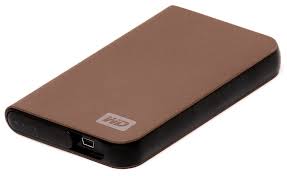I'm back with providing you with simple and feasible data solutions. Today we're going to talk about what to do when we attach a External harddrive to our system and it doesn't show up in our device list. So yeah topic is external hard drives and that's probably the most affordable and most reliable solution for backing up our data but sometimes we use these bodies for transferring important data from one computer to another. So having them working fine all the time is essential. Usually they are fairly simple to use. All you have to do is just to plug them in and they appear on the computer then you can drag, drop, copy, delete files do whatever you like but sometimes you may connect our external drive to the PC with the USB port and find out that it doesn't show up. Usually the problem could be caused by one of these reasons, a broken USB port or we may have partition issues on the external drive or we're using the wrong file system or there's the driver corruption or the driver is simply outdated now. We'll talk about all these possibilities and how to overcome them. First thing to do let's go to a personal computer with Windows operating system and explore the disk management utility. This is the first place we should check whether the hard drive shows up if we're troubleshooting. Press the Windows key and the X button or simply right-click the start button and select disk management from the list or you can also press the Windows key and R that already is advanced magic and type diskmgmt.msc that's opening the very same thing the disk management. After that we're gonna see this management summary and it's going to show us all the available hard drives which are connected and recognized by the computer. We should see our external hard drive also listed in the disk management window even if it hasn't appear in the PC window because sometimes it simply doesn't have any partition and this is very likely to happen if you're attaching a Brad new extended drive for the first time. Let's try to initialize it go and simply select the unallocated space. you only have to create a new partition and let's see how this is done. Right-click on the unallocated space, select new simple volume which is the option and then follow the wizard to create a new partition. Once finished partitioning the drive, you can safely remove the drive, plug it back and it should be operating back as normal.
There's a third possible scenario which is the nicest of all of them. your external drive is fine. There is a partition however there is no letter which is assigned to that partition so here's what we do in that situation. Right-click on your drive and select change drive letter and paths select the add option if your hard drive doesn't have a drive letter. Click the change if it already has a letter and make sure to select a sign the following drive letter then select the one you prefer and click the ok button so far so good we have explored three of the rather simple scenarios. Now we're going to increase the difficulty and involve different file systems. If the drive appears partitioned but you still can't access it it's probably partitioned with a different file system. For example you may have formatted your drive with the XFS file system from linux or AP FS on Mac but Windows can't read those file systems you'll need to reformat the drive with a newer NTFS or with the older fat32 file system so that windows would be able to recognize it. You can do that from the disk management just right click and select formats but please make sure that you have a backup of all the data that you're about to erase. If your external drive is still not showing up even after the format don't give up, carry on you need to determine why your drive is not recognized. It's possible that you have a hardware issue or a driver problem or simply the drive is dead to exclude the possibility of a broken USB port. We're going to make a very basic exercise take the external hard drive and plug it into another USB port. If the drive shows up it's clear that port number one is faulty. If it still doesn't show up maybe it's a good idea to verify whether it's going to appear on another computer don't forget that at any point of time there's the possibility that the cable that you use is also faulty. If the troubleshooting with using another USB port or another USB port of another computer does not really help maybe we should start accepting the possibility that there's a hardware issue with the drive itself but we're gonna stay in the most software level and I'm gonna show you how to possibly recover driver issues. Press the Windows key and the X button and select the device manager in the list, expanded this drive category check for any devices with yellow exclamation mark if you see the symbol that might be well indicating a problem. So right click select properties and check the error message if that still doesn't work it is worth trying to update the driver and for Windows 8 and Windows 10 this is really easy and a very automatic process. Go to device manager, look the external hard drive from the list, go to properties select update driver software and then select search automatically for updated driver software. So there we are plenty of things that can lead to possible inability to access our external hard drive but now we know plenty of ways how to fix that.





0 Comments